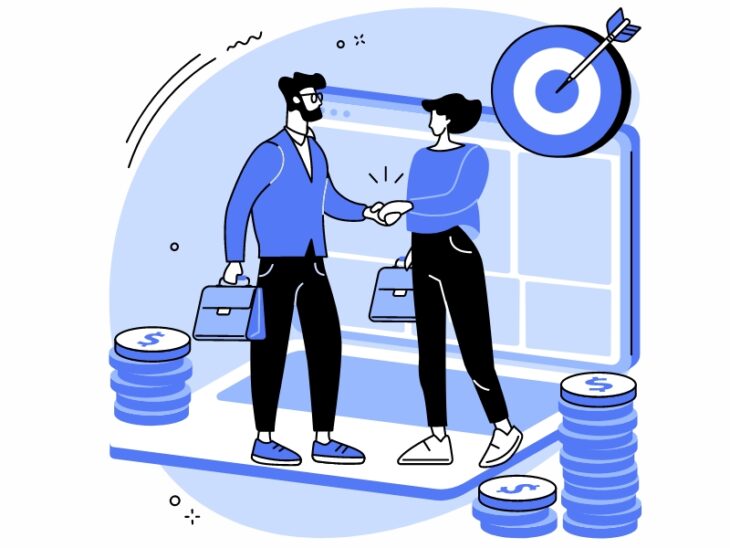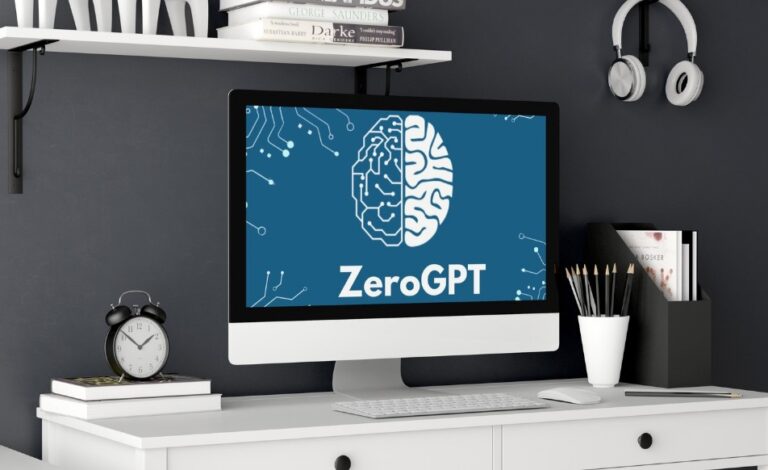Affiliate marketing involves promoting products or services and earning a commission for each sale made through your referral. It’s a popular way to generate income online. You recommend items to others and get paid when they buy.
This guide will help you understand the key differences between high-ticket and low-ticket affiliate marketing, so you can decide which approach suits you best.
Table of Contents
ToggleWhat is High-Ticket Affiliate Marketing?
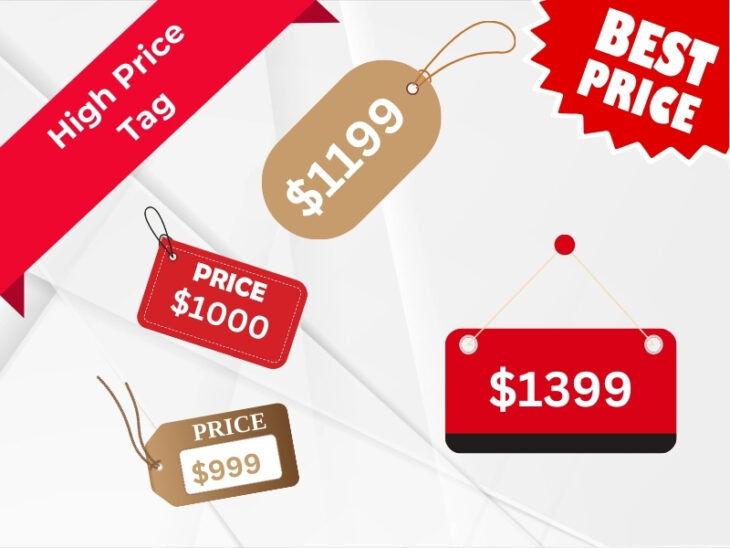
High-ticket affiliate marketing involves promoting products or services with high price tags. These items typically cost $1,000 or more. Examples include luxury goods, high-end electronics, business education programs, and investment opportunities.
The main attraction of high-ticket affiliate marketing is the potential for large commissions. One sale can result in significant earnings. This strategy often requires more effort. You need to build trust with your audience and provide detailed information to convince them to make a purchase.
The higher cost can lead to lower conversion rates, but the rewards can be substantial when a sale occurs.
What is Low-Ticket Affiliate Marketing?
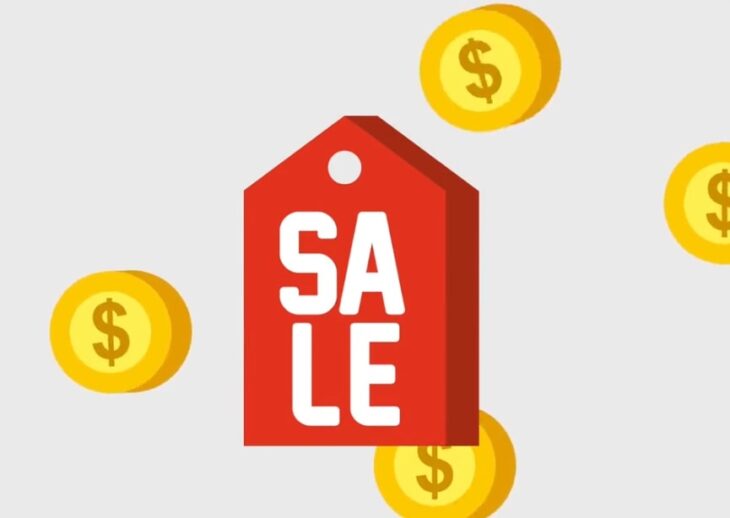
Low-ticket affiliate marketing involves promoting products or services with lower price tags. These items typically cost less than $100. Examples include everyday consumer goods, inexpensive electronics, and digital products like e-books or online courses.
The main advantage of low-ticket affiliate marketing is the higher sales volume. Lower prices attract more buyers, leading to more frequent sales. This approach requires less effort to convince potential customers. The lower cost makes it easier for people to make impulse purchases.
While the commissions per sale are smaller, consistent sales can add up to a steady income stream.
Commission Differences
High-ticket affiliate marketing offers larger commissions per sale. Promoting expensive items means each successful referral can bring in a significant payout. Low-ticket affiliate marketing, on the other hand, provides smaller commissions. Selling cheaper products results in less money per sale, but these sales can happen more frequently.
Sales Volume and Consistency
High-ticket items typically sell less frequently due to their higher cost. This can lead to more sporadic income. In contrast, low-ticket items often sell more consistently. The lower price point appeals to a broader audience, resulting in a steady stream of smaller commissions. This consistency can provide a more reliable income flow.
Conversion Rates
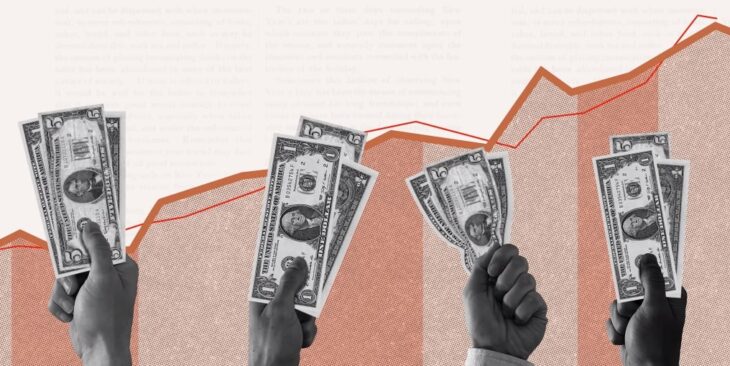
High-ticket items usually have lower conversion rates. The high cost can deter many potential buyers, making it harder to close sales. For example, promoting a $2,000 online course might only convert 1% of visitors. Out of 1,000 visitors, you might get 10 sales. Detailed product information, positive reviews, and strong testimonials are key. Potential customers need reassurance about the value and benefits of spending a large amount.
In contrast, low-ticket items tend to have higher conversion rates. The lower price makes it easier for customers to decide to buy, resulting in more frequent sales. For instance, promoting a $20 fitness guide might convert to 10%. Out of 1,000 visitors, you could get 100 sales. Impulse buying is more common with low-ticket items, leading to quicker decisions and higher sales volumes.
Marketing Strategies for High-Ticket Products
Content Creation
- In-depth Reviews: Write detailed reviews covering all aspects of the product. For example, a review of a $2,000 camera should discuss features, performance, and user experience.
- Case Studies: Share success stories from people who have benefited from the product. A case study on a $3,000 online marketing course could show how a business doubled its revenue.
Webinars
Host webinars to demonstrate the product live. For example, a webinar for a $1,500 software tool can show its features in action and answer questions in real time.
Personalized Follow-Ups
Send personalized emails to potential buyers. Address their concerns and provide additional information. For instance, follow up with leads interested in a $5,000 coaching program by offering a free consultation.
Exclusive Bonuses
Offer bonuses to add value. For example, include a free one-on-one coaching session with the purchase of a $2,500 online course.
Marketing Strategies for Low-Ticket Products
Content Creation
Write straightforward reviews highlighting key benefits. For example, a review of a $15 skincare product should emphasize its effectiveness and affordability.
Social Media Promotion
Utilize social media platforms to reach a broad audience. Share posts, stories, and ads promoting the product. For instance, use Instagram to promote a $30 fitness app subscription.
Email Marketing
Send regular newsletters with product recommendations. Include special offers or discounts. For example, promote a $10 e-book with a limited-time 20% discount.
Influencer Collaborations
Partner with influencers to reach their followers. For instance, collaborate with a fitness influencer to promote a $25 workout plan.
Target Audience
High-Ticket Products
- Niche Market: High-ticket items usually target a specific, niche market. For example, luxury travel packages or advanced business coaching programs attract a particular audience willing to invest in quality and exclusivity.
- High-Income Individuals: These products often appeal to high-income individuals who can afford to spend more. For instance, a $2,000 online marketing course targets business owners or professionals seeking significant career advancement.
- Decision-Makers: The audience for high-ticket items typically includes decision-makers or influencers within an organization. Promoting a $5,000 software solution might involve engaging with company executives or department heads.
Low-Ticket Products
- Broad Market: Low-ticket items appeal to a broader audience. Everyday consumer goods, such as $15 beauty products or $30 fitness apps, attract a wide range of customers.
- Budget-Conscious Buyers: These products often appeal to budget-conscious buyers looking for value and affordability. A $20 cooking book or a $10 mobile app subscription fits within this category.
- Impulse Shoppers: Low-ticket items are more likely to attract impulse buyers. Quick and easy purchasing decisions are common, driven by lower prices and frequent promotions.
Effort and Time
High-Ticket Products
- Content Creation: Requires extensive content creation, such as in-depth reviews, case studies, and detailed tutorials. For example, promoting a $3,000 coaching program might involve creating multiple blog posts, video testimonials, and an in-depth guide.
- Personal Interaction: More personal interaction with potential buyers is often needed. This can include one-on-one calls, personalized emails, and live webinars. A $1,500 training program might necessitate a free consultation call to address specific questions.
- Longer Sales Cycle: The sales cycle for high-ticket items tends to be longer. Buyers take more time to make decisions, requiring ongoing engagement and follow-up. For instance, selling a $2,000 online course might involve several weeks of communication and nurturing leads.
Low-Ticket Products
- Simpler Content: Less detailed content is sufficient. A short blog post or a quick video review can effectively promote a $20 product.
- Automation: Marketing for low-ticket items can often be automated. Email marketing campaigns and social media ads can run without constant oversight. Promoting a $30 subscription box might involve setting up automated email sequences and social media posts.
- Quicker Sales Cycle: The sales cycle is usually shorter. Buyers make quick decisions, leading to faster sales. A $15 e-book can be sold through a simple landing page and a few promotional emails.
Risk and Reward Analysis

High-Ticket Products
- Higher Risk: There is a higher risk due to the potential for fewer sales. A failed high-ticket campaign can result in significant losses. For example, investing time and money into promoting a $5,000 seminar with no sales can be costly.
- Higher Reward: Successful high-ticket sales can lead to substantial rewards. A single sale can generate a large commission, making the effort worthwhile. Selling just five $2,000 courses can result in significant earnings.
Low-Ticket Products
- Lower Risk: There is a lower risk as the cost of failure is less. Even if a campaign doesn’t perform well, the financial loss is minimal. Promoting a $10 product that doesn’t sell well doesn’t impact the budget significantly.
- Steady Income: While each sale generates a smaller commission, frequent sales can add up to a steady income. Consistently selling low-ticket items can provide a reliable revenue stream.
You Can Combine Both Approaches
Combining both high-ticket and low-ticket products can balance sales and income. High-ticket items provide significant earnings per sale, while low-ticket items ensure consistent revenue. This approach allows you to reach different audience segments. High-ticket products cater to niche, high-income individuals, while low-ticket items appeal to a broader, budget-conscious audience.
For example, you can promote a $2,000 business course with detailed webinars, personalized emails, and exclusive bonuses. At the same time, you can promote a $20 e-book on the same topic using blog posts, social media ads, and automated email campaigns. This strategy captures both high-value and quick-sale opportunities, maximizing overall revenue.
Choose the Right Strategy for You
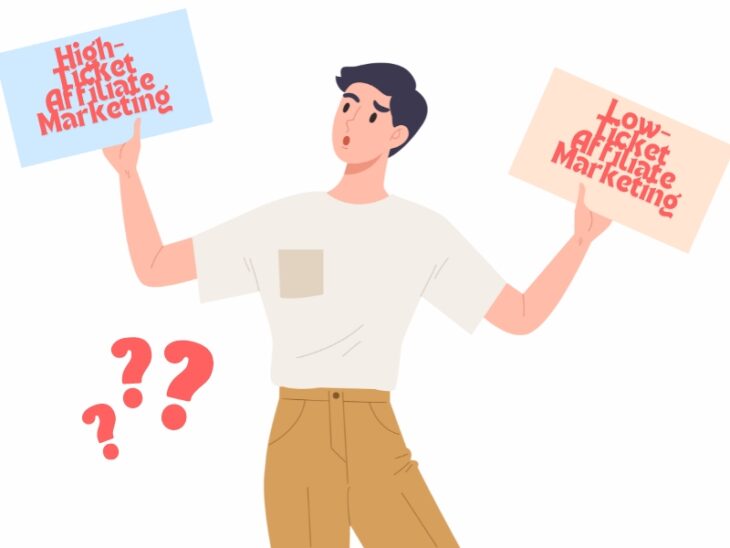
Determine your income goals. If you aim for quick, consistent sales, low-ticket marketing might be suitable. If you seek significant earnings per sale, high-ticket marketing could be the better choice. Consider the time and effort you can invest. High-ticket marketing requires more time and personal interaction, while low-ticket marketing can often be automated.
Understand your audience profile. High-ticket items appeal to a specific, high-income niche, while low-ticket items attract a broader, more varied audience. Research market demand for the products you want to promote. Ensure there is a demand for high-ticket items in your niche or a substantial market for low-ticket products.
Choose a strategy that aligns with your marketing style. If you enjoy creating detailed content and engaging with leads, high-ticket marketing may be rewarding. If you prefer quick sales and automation, low-ticket marketing might be more suitable.
Conclusion
Choosing between high-ticket and low-ticket affiliate marketing depends on your goals, resources, and audience. High-ticket marketing can lead to substantial earnings with fewer sales, making it ideal for those who can invest time in building trust and creating detailed content. Low-ticket marketing offers more frequent sales and appeals to a broader audience, making it a reliable source of steady income.
